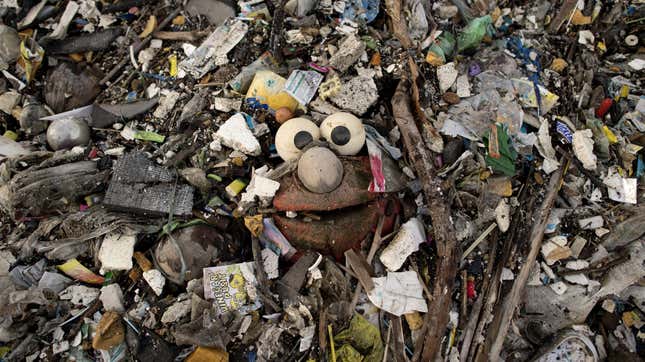
Children’s toys contain many potentially toxic chemicals, recent research suggests. The study highlights over 120 concerning chemicals commonly found in plastic toys that could possibly raise a person’s risk of health problems, including cancer.
Scientists have been worried about chemicals found in plastic for a while now, including those in plastic toys. Many of these chemicals are known to mimic hormones in the body, and it’s feared that enough exposure to these “endocrine disruptors” can have subtle negative health effects, especially in younger people who are still developing. But according to the authors of this study, published in the January issue of Environment International, there’s still not enough information available about which specific chemicals commonly found in plastic toys are the most likely to cause problems.
To come up with their ranking of concerning chemicals, they reviewed 25 earlier studies that tested the chemical make-up of certain toys, along with toxicity data on these chemicals. Then they cross-referenced that information with research on how children play with these toys, such as whether they’re likely to put them in their mouths, in order to gauge the level of regular exposure to any problem chemicals.
“Out of 419 chemicals found in hard, soft and foam plastic materials used in children toys, we identified 126 substances that can potentially harm children’s health either via cancer or non-cancer effects, including 31 plasticizers, 18 flame retardants, and 8 fragrances,” said senior study author Peter Fantke, a researcher at the Technical University of Denmark, in a statement from the university. The study also involved researchers from the University of Michigan and the United Nations Environment Program based in France.
While many of the chemicals the authors identified have been singled out in the past as a potential public health concern, including phthalates, they also found some that hadn’t been flagged by other countries or organizations as needing to be regulated. Some chemicals were also potential “regrettable substitutions”—chemicals that were supposed to be an safer alternative to an earlier unsafe chemical but that might carry similar health risks anyway.
There’s still a lot unknown about the exact degree of harm posed by plastics and the chemicals they carry. And because they’re so ubiquitous in the environment, there’s not much any one person can do to reduce their exposure to them. What’s needed is wide-scale regulation of these chemicals across countries, the international team of authors say. They hope their research can provide a baseline for others to use in quantifying which chemicals are the most dangerous to children.
“These substances should be prioritized for phase-out in toy materials and replaced with safer and more sustainable alternatives,” Fantke said.